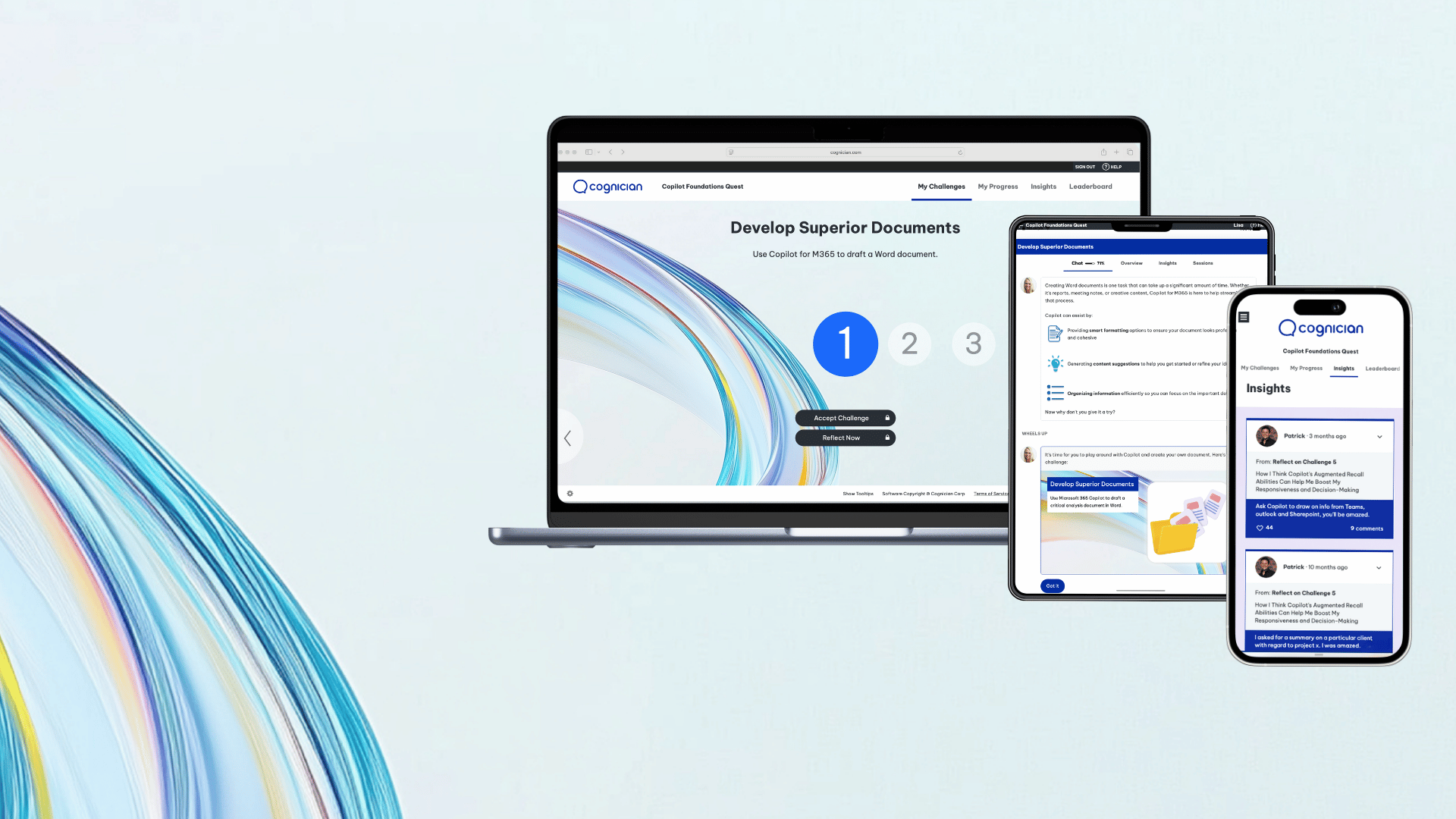Effective leadership in the Generative AI era requires fostering experimentation, developing skills, promoting ethics, and enabling quick decisions. Patrick Kayton outlines four key actions for leaders to drive GenAI success: mindset, proficiency, decisions, and activation.
Generative AI (GenAI) is everywhere – but how can you harness it to thrive as a leader? Simply dishing out licenses to team members won't get you very far. Neither will writing inspirational memos and mandating training. To drive real adoption, you need to activate new behaviors – in yourself and in your team. You need to have and share experiences that enable you and your team to win. Here are four practical ways to do that.
1. Work on Your GenAI Mindset
Success starts with mindset. A GenAI mindset means being curious, willing to experiment, and being a hard driver for ethical use of AI. If you're willing to play with AI tools, iterate prompts, and examine odd outputs with a learning attitude, you're already ahead. You need to treat a disappointing result not as a failure but as feedback. Leaders who do this ask themselves, "Did I ask the wrong question? What if I tweak it?" That's the kind of thinking that sets you apart. A laggard might say, "I just want the AI to give me the answer," whereas you'll say, "I'll try a few things out and see what happens." This proactive, exploratory stance sends a signal to your team. It tells them it's okay – even encouraged – to learn by doing.
And doing is what this is all about: moving from exploring GenAI to becoming proficient.
2. Build Your GenAI Proficiency
Roll up your sleeves and use GenAI tools daily – from basic tasks to advanced prompting. Then share what you learn and do with your team – your clever prompts and your mistakes as well. Many people struggle to craft good prompts beyond copy-pasting examples, so show them that mastery comes from practice. By openly integrating AI into your workflow, you normalize adoption. Your hands-on example will create a ripple effect in your team. And when all your colleagues become proficient too, a little magic will happen. They will start to spot AI opportunities no one else notices. Because each of your colleagues has a unique contribution to make, based on their personal experience and their position. Building up their AI skills doesn't only make it possible for them to do new things. It makes it possible to see new use cases too. Your example plus a supportive environment will prompt people to see and propose AI solutions you might never have imagined.
But proficiency alone isn't enough. You also need to make confident, strategic decisions about how AI is used.
3. Flex Your AI Decision-Making Muscles
Adopting GenAI requires judgment and decisiveness. You need to make bold yet responsible choices and guide others to do the same. One of our clients helped its leaders develop these skills in a fun, safe way. They invited more than 180 senior leaders to play a simulation game on the Cognician platform, which built decision-making muscle. The game involved making rapid-fire strategic decisions to build an AI-enabled team. Each choice involved balancing trade-offs across key dimensions. Exactly the kind of dilemmas we all face as leaders. Do you innovate now or keep your powder dry? Do you grab a short-term win if it means threatening long-term trust? These choices are challenging. But the more you flex those decision muscles, the more adept you become at making the quick, nuanced calls the GenAI era demands. And your team will trust your guidance if they've seen you navigating the grey areas with purpose.
Decisions aren't the destination, however. You need to bridge the gap between choices and actions.
4. Execute and Activate – Don't Just Plan
You must turn decisions into swift action to enable AI adoption at scale. Too many organizations hesitate while agile competitors charge ahead. The gap is real. Those who activate their people early are already reaping compounding benefits. GenAI adoption is not an IT project, it's a strategic imperative. You need to set ambitious goals and get moving. One of our clients – a major bank – set a goal to save £50 million through new AI use cases in year one. From what we hear, the year two target will be multiples greater. As a leader you need to be the driving force of this change. Set the destination, remove roadblocks, provide resources, and hold teams accountable. That means replacing passive communication with active involvement. It means sponsoring hackathons and other agile events that champion urgency and progress. It means celebrating success stories and framing celebration with purpose.
At every step, activate, activate, activate! That's the thread uniting these four actions. If you embrace these approaches, you won't just supervise an AI rollout. You'll cultivate a culture where your organization thrives with GenAI. That means a team eager to experiment, skilled in execution, and unafraid to innovate. In other words, exactly the kind of team that turns the AI revolution from a threat into an opportunity.
So, ask yourself: are you 'all in' for AI? The leaders who are, are already pulling ahead – and bringing their people with them.
.png)


.png)

